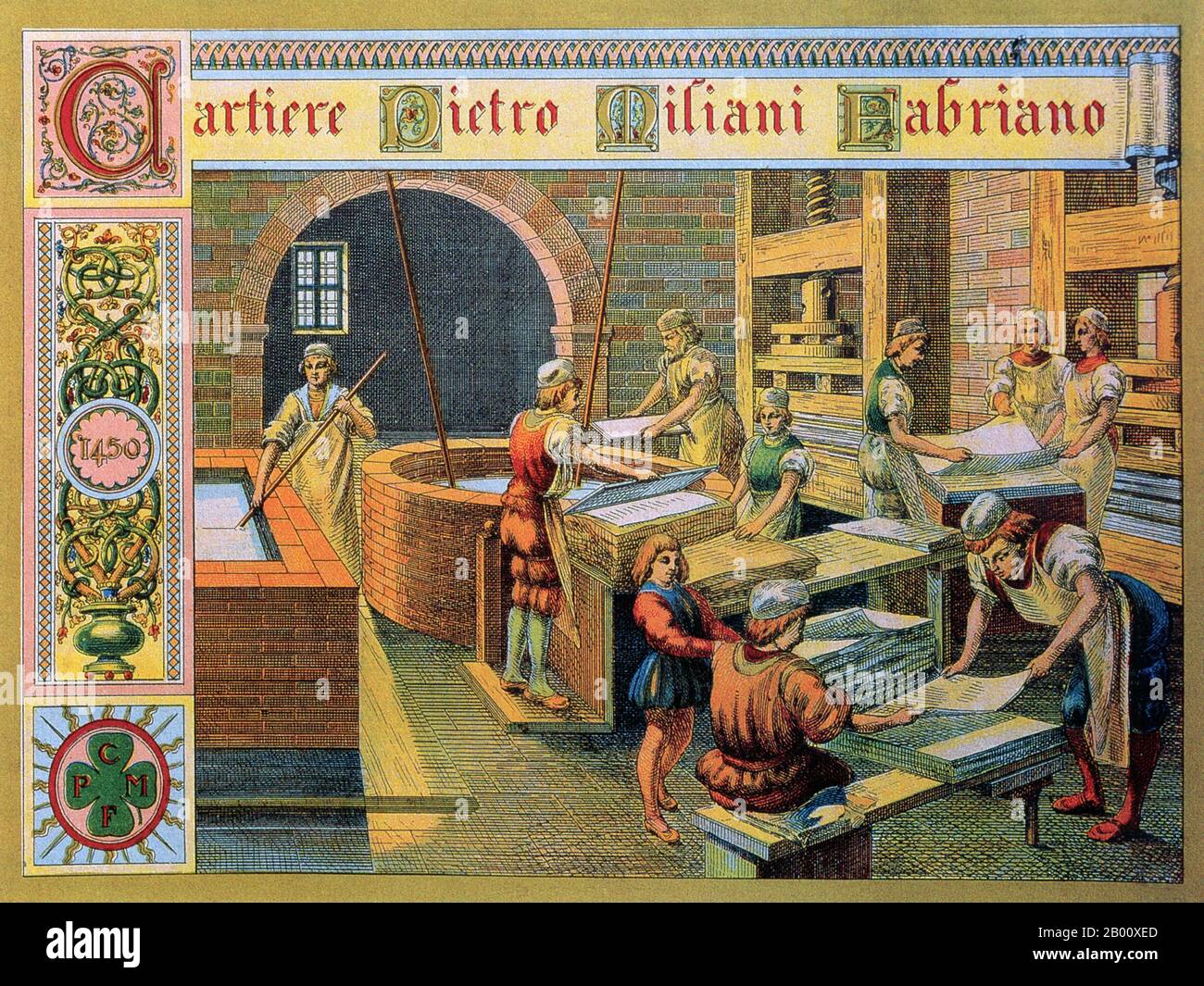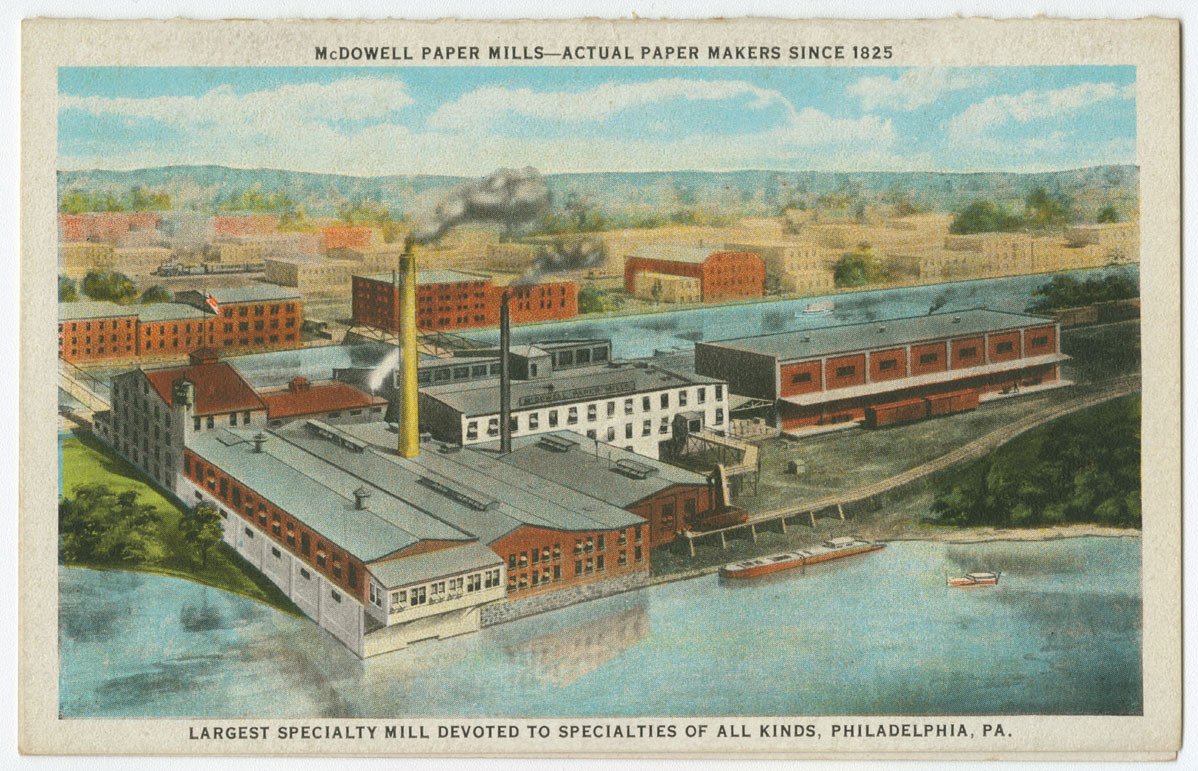With the increased access to technology and even new innovations where iPads can be used as a notebook, there seems to be less need for paper. The phrase, 'History of Paper' might even seem a bit silly, but humans have been documenting and recording their thoughts since the dawn of time. Many early civilizations used mostly what as available at the time as an early form of 'paper', clay slabs, tree bark, and even pressed papyrus, which is actually what early paper was made out of. 200 BCE- China
 |
| Early Chinese Paper Mills |
The earliest known paper was traced back to the early ages in China where a paper prayer was embedded on the brick of a home. In this time, paper was generally reserved for religious purposes, the government, or wealthy business owners to complete transactions. The early papermakers used old fishing nets, bamboo, mulberry bark, and even hemp to make the papers. Firstly, fibers were collected from the materials and then sent to pits either lined with stone or wood to soak for up to three months. Next, the papermakers would ground the fibers into a pulp using wooden tools or rocks. Scoops of the pulp where then poured on top of a rectangular framed mold and spread out evenly with their hands. Water was then drained through a screen to separate the pulp from the wet paper. The molds with the paper where then left out in the sun to dry and then peeled of the mold once done. The average papermaker at this time owned approximately 25-30 molds.
600 CE- Korea
By 600 CE, the art of paper making had spread to Korea. The core basics of the process stayed the same, but by this time, the Koreans were using new advanced technologies to help speed up the paper making. For example, they were using an animal powered grinding or pulping mill process. They also invented the laid paper mold- a bamboo frame with a screen cover and two deckle strips; and started to lay the wet paper sheets to a wooden board to dry instead of leaving them in the molds, allowing for the molds to be reused more quickly.
610 CE- Japan
Ten years later, the paper making process made its way to Japan by Korean Buddhist Monks. In 770 CE, the Empress Shotuko ordered a mass printing of paper, which is commonly know as Hyakumanto Dharani.
1264 CE- Italy
 |
| Early Italian Paper Mill |
Fast forward to 1264 CE in Italy where there were already many established paper mills. The Europeans by this time used cotton and linen in their mills, which is more similar to the paper we know today. The method of using linen consisted of, cutting the cloth into strips and then rolling these strips into balls, coating them in lime, and then leaving the cloth to ferment for weeks. Around one third of the rags rotted and were unstable while the other two thirds were ready for the next step of the process. The papermakers in Italy were also the ones who perfected the paper molds. They used wood and metal, which consisted of a wood frame and a metal screen that they dipped into a vat of 90% water and 10% pulp. The water and pulp mixture was then shook on the screen to evenly distribute the pulp while the water drained out.
1869- United States
 |
| Early U.S Paper Mills |
The process of paper making reached Mexico and the United States around the year 1575 when the first paper mill was created in the city of Culhuacan, just south of present day Mexico city. The first uses of wood fibers to make paper weren't until 1869 by Denison Remington of Remington Paper Company of Watertown, located in New York. William Russell, another papermaker, has built two paper mills in New Hampshire and Vermont around the same time as Remington. One of Russell's salesman filled the Boston Herald's news print order with wood and didn't tell the publisher. The printing process worked so well with the wood made paper, that they refused to use anything else afterwards. Now, majority of paper is made out of wood as it is less expensive to mass produce and the materials were more abundant than cloth.
The Impact of Paper:
As humans, we use some form of paper everyday. To the paper we use to take notes in school or work, the napkins and paper towels we use in the kitchen, to even the money we exchange day to day. Paper has even revolutionized the way humans could now communicate with each other. Letters could be written and sent thousands of miles away, ideas could be written down and remembered later, and it is now used for advertising and convincing communities to buy your products. The collaboration of different cultures over thousands of years to create the paper we know and use today is truly remarkable and really exemplifies human's ability to create and evolve.


No comments:
Post a Comment